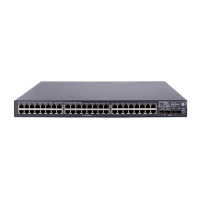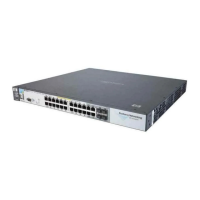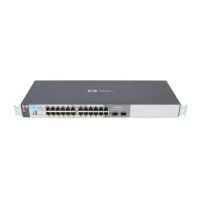Traffic/Security Filters
Configuring Traffic/Security Filters
Configuring Traffic/Security Filters
Use this procedure to specify the type of filters to use on the switch and
whether to forward or drop filtered packets for each filter you specify.
1. Select the static filter type(s).
2. For inbound traffic matching the filter type, determine the filter action
you want for each outbound (destination) port on the switch (forward or
drop). The default action for a new filter is to forward traffic of the
specified type to all outbound ports.
3. Configure the filter.
4. Use show filter (page 9-21) to check the filter listing to verify that you have
configured correct action for the desired outbound ports.
Configuring a Source-Port Traffic Filter
Syntax: [no] filter
[source-port < port-number | trunk-name>]
Specifies one inbound port or trunk. Traffic received
inbound on this interface from other devices will be
filtered. The no form of the command deletes the source-
port filter for < port-number > and returns the destination
ports for that filter to the
Forward action. (Default:
Forward on all ports.)
Note: If multiple VLANs are configured, the source-port
and the destination port(s) must be in the same VLAN
unless routing is enabled. Similarly, if a VLAN containing
both the source and destination is multinetted, the
source and destination ports and/or trunks must be in the
same subnet unless routing is enabled.
[ drop ] < destination-port-list > [ forward < port-list >]
9-16

